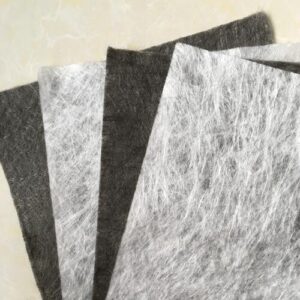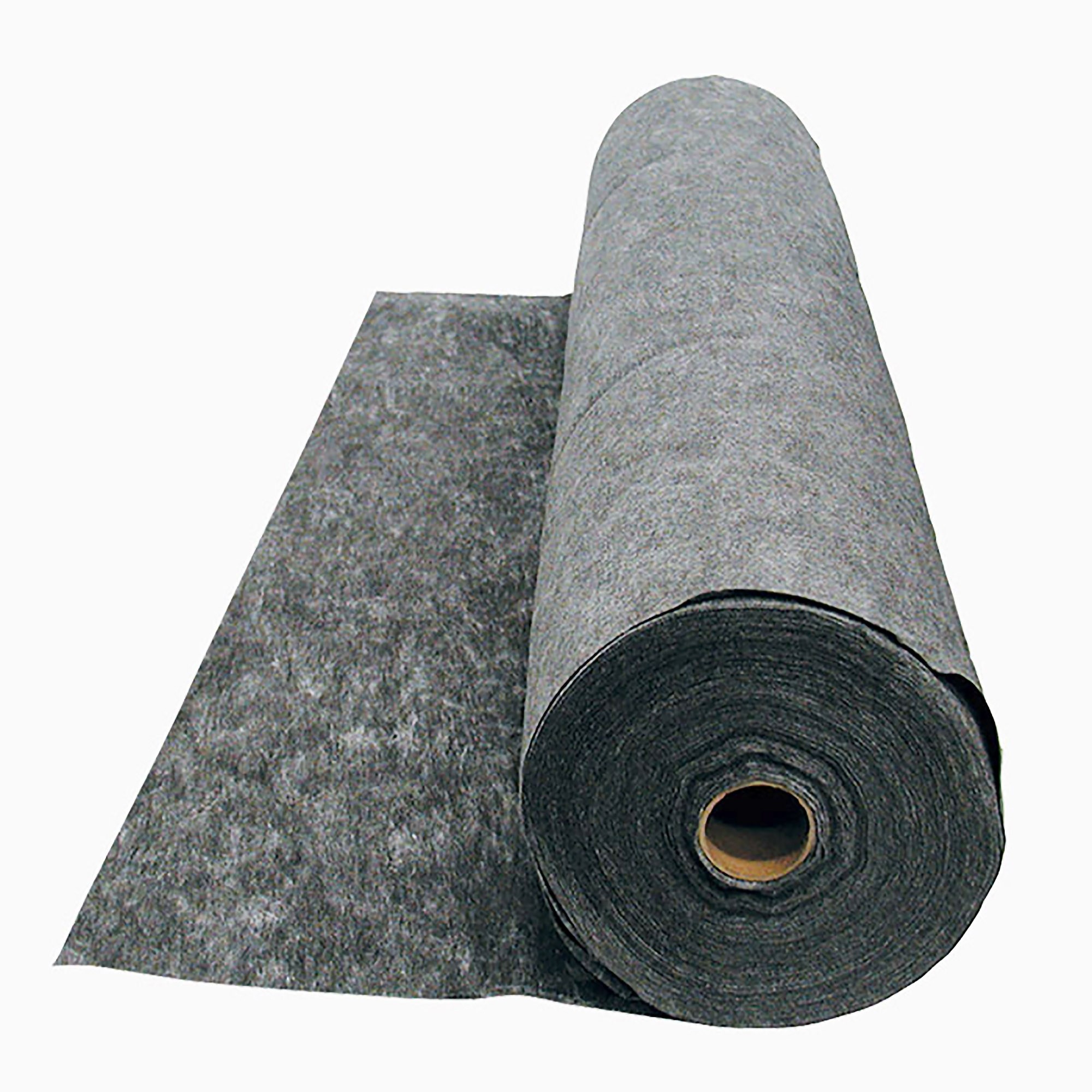What scenarios are geotextiles used in?
Geotextiles are permeable fabrics made from synthetic or natural fibers and are commonly used in various civil engineering and environmental applications to enhance the performance of soil, rock, or other geotechnical materials. Here are some scenarios where geotextiles are commonly used:
Road Construction and Pavement: Geotextiles are used to reinforce and stabilize soil in road construction. They can be placed beneath the pavement layers to distribute loads, reduce rutting, and improve overall durability.
Railroad Construction: Geotextiles are employed in railroad track beds to improve drainage, reduce soil erosion, and enhance the stability of the track structure.
Retaining Walls: Geotextiles are used behind retaining walls to improve soil stability, prevent erosion, and provide additional support.
Erosion Control: Geotextiles are utilized in erosion control applications, such as in the stabilization of slopes, embankments, and shorelines. They help to prevent soil erosion and retain sediment.
Landfill Liners: Geotextiles can be part of landfill liner systems to separate different layers and prevent the mixing of contaminants with groundwater.
Dams and Levees: Geotextiles are used in the construction of dams and levees to enhance soil stability, prevent erosion, and provide additional strength.
Drainage Applications: Geotextiles are employed in drainage systems to filter out fine particles and prevent clogging while allowing water to pass through. They are used in combination with geocomposites for various drainage applications.
Subsurface Drainage: Geotextiles can be used in subsurface drainage systems to promote water flow while preventing the movement of soil particles.
Reinforced Soil Structures: Geotextiles are used to reinforce soil in structures such as mechanically stabilized earth (MSE) walls and reinforced slopes.
Dewatering: Geotextiles can be used in dewatering applications to separate solids from liquids in sludge, allowing for easier disposal or reuse.
Agricultural Applications: Geotextiles are used in agriculture for weed control, protection of crops, and soil stabilization.
Sports Field Construction: Geotextiles can be used in the construction of sports fields to enhance drainage, reduce compaction, and improve overall stability.
These are just a few examples, and the versatility of geotextiles makes them valuable in a wide range of geotechnical and civil engineering applications.

How to judge the quality of geotextile?
Judging the quality of geotextile involves assessing several key characteristics and properties. Here are some factors to consider when evaluating the quality of geotextile materials:
Material Type and Composition:
Identify the type of material used (polypropylene, polyester, polyethylene, etc.).
Check for compliance with relevant industry standards for geotextile materials.
Weight and Thickness:
Evaluate the weight and thickness of the geotextile, as these factors can influence its strength and durability.
Strength and Tensile Properties:
Assess the tensile strength and elongation properties of the geotextile. These properties indicate the material’s ability to withstand forces without breaking.
Permeability:
Permeability is crucial for geotextiles used in drainage applications. Ensure that the geotextile allows water to pass through while preventing soil particles from clogging the fabric.
Pore Size and Opening Size:
Examine the pore size distribution to understand how well the geotextile filters fine particles. Smaller pore sizes may be necessary for applications where filtration is critical.
UV Resistance:
Geotextiles exposed to sunlight should have adequate UV resistance to prevent degradation over time.
Chemical Resistance:
Evaluate the geotextile’s resistance to chemicals present in the soil or environment where it will be used. Chemical resistance is crucial in applications where exposure to aggressive substances is likely.
Durability and Longevity:
Consider the expected lifespan of the geotextile under specific environmental conditions. High-quality geotextiles should exhibit durability and longevity appropriate for the intended application.
Manufacturing Quality:
Inspect the geotextile for manufacturing defects such as irregularities, holes, or inconsistent material properties. Quality manufacturing processes contribute to the overall reliability of the geotextile.
Compliance with Standards:
Ensure that the geotextile complies with relevant industry and regulatory standards. Different applications may have specific standards that need to be met.
Certifications:
Look for certifications from recognized testing organizations or quality assurance programs that verify the geotextile’s compliance with established standards.
Supplier Reputation:
Consider the reputation of the supplier or manufacturer. Reputable companies are more likely to produce high-quality geotextiles that meet industry standards.
It’s essential to consult with geotechnical engineers or other experts in the field to ensure that the selected geotextile meets the specific requirements of the intended application. Additionally, product specifications and testing reports provided by the manufacturer can be valuable sources of information about the geotextile’s quality.
Why use geotextiles?
Geotextiles are used for a variety of reasons in civil engineering, construction, and environmental applications due to their unique properties and benefits. Here are some key reasons why geotextiles are commonly used:
Reinforcement: Geotextiles provide reinforcement to soil, improving its strength and stability. This is particularly important in applications such as road and railway construction, where geotextiles help distribute loads and prevent soil erosion.
Separation: Geotextiles act as a barrier between different soil layers or between soil and other materials. They prevent the mixing of soil particles and enhance the performance of structures like retaining walls and road bases.
Filtration: Geotextiles allow water to pass through while preventing the movement of soil particles. This filtration capability is valuable in drainage applications, preventing clogging and ensuring proper water flow.
Drainage: Geotextiles are used in drainage systems to promote the efficient removal of water from the soil, reducing the risk of waterlogging and improving overall stability.
Erosion Control: Geotextiles help control soil erosion by stabilizing slopes, embankments, and shorelines. They provide protection against the impact of water and weather, preventing the loss of soil.
Protection: Geotextiles offer protection to geomembranes and other vulnerable materials. For example, they can be used as a protective layer in landfill applications to prevent punctures and damage.
Road Construction: Geotextiles are widely used in road construction to improve the performance and longevity of pavements. They help in reducing rutting, enhancing load distribution, and providing overall stability.
Environmental Applications: Geotextiles play a role in environmental protection, such as in landfills and containment areas. They help prevent the migration of contaminants, protect against soil erosion, and contribute to overall environmental sustainability.
Cost Savings: In many cases, the use of geotextiles can lead to cost savings by reducing the need for additional materials, providing reinforcement without the use of traditional construction methods, and extending the lifespan of structures.
Construction Efficiency: Geotextiles are often easy to install and handle, making construction processes more efficient. They can be customized to fit specific project requirements and are available in various forms, such as rolls or sheets.
Versatility: Geotextiles are versatile materials that can be tailored for specific applications. Different types of geotextiles are available, including woven, non-woven, and knitted varieties, allowing engineers to choose the most suitable option for their project.
Overall, geotextiles contribute to improved performance, durability, and sustainability in a wide range of civil engineering and construction applications.
Author
-

Founded in 2002, Tinhy's team focuses on the manufacturing, marketing, installation, application and research and development of geosynthetic materials.
View all posts




